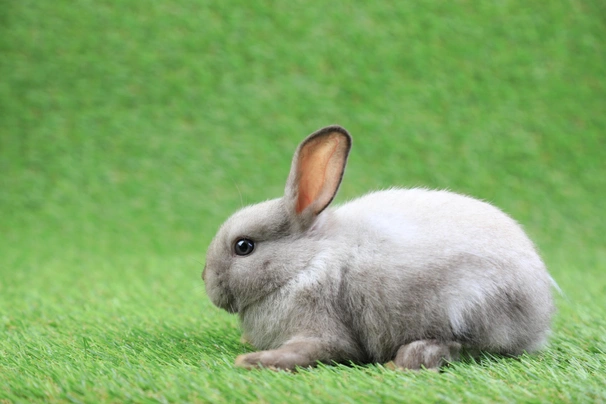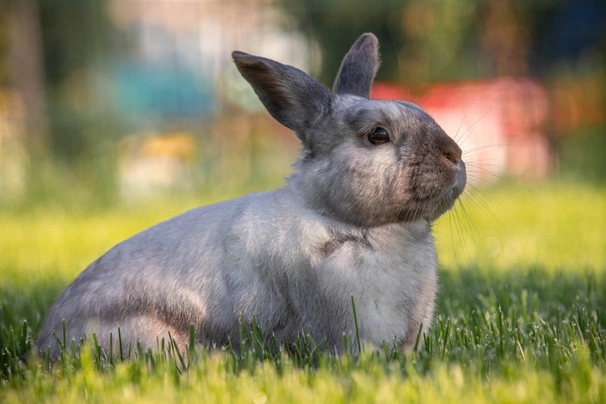Sallander
Introduction of the Sallander
The intriguing Sallander Rabbit made its first appearance on the Continent back in Holland in the 1970s, when it formed part of a litter from the red and sooty Thuringer, which had been put with an agouti Chinchilla Rabbit. The resulting kits had coats that were incredibly striking and looked like they’d been ‘painted’ by a very skilled artist.
Because of its unique coat, the Sallander colouring is finding its way into other breeds such as the lop types and the Lionhead breeds. The Sallander is a medium sized rabbit that usually weighs between six and 10 pounds.
History of the Sallander
In Holland in the 1970s, the stunning Dutch Thuringer Rabbit was bred with agouti Chinchillas to create an entirely new breed. The striking colouring that resulted from the cross – a light grey that graduates to a darker grey along the flanks, underside and face – meant that the original breeders were immediately taken with these new kits and decided to selectively breed for this distinctive coat.
Currently the Sallander Rabbit only has a limited following in the United States, where it is not yet recognised by the American Rabbit Breeders Association (ARBA). Here in the UK however, it is recognized by the British Rabbit Council (BRC) and is listed as a ‘rare’ breed under the ‘Fur’ section.
Appearance of the Sallander
- Main colourways: Light grey graduating to a darker grey on the belly, flanks and cheeks
- Average weight: 2.7 – 4kg
The Sallander is a medium rabbit that is well rounded and muscular. The neck is short and barely visible, and the head is robust with a broad muzzle. The ears are long and wide, reaching about 4-5 inches in length.
They have extremely bright eyes that lend them a bold, alert look. Nails are either grey or horn in colour. Overall the look of the Sallander is ‘cobby’ - rounded and stocky with good muscle cover. The legs are short yet very powerful and mature does often display a well-developed dewlap.
The Sallander looks very similar to the sable varieties of the Netherland Dwarf, but on closer inspection the light grey of the Sallander that builds to a darker grey on the sides, tummy and face, is the result of the darker Chinchilla gene, while the sable ND is the result of the light Chinchilla gene.
The ‘points’ of the animal (the face, ears, feet and tail) are a very dark grey, which provides a stunning contrast to the lighter grey that covers much of the rest of the body. What’s quite remarkable about these rabbits is that their coat, with its distinct whirling pattern, appears to be ‘painted’ on.
Temperament of the Sallander
Although it’s not widely kept as a pet, there are companion Sallander Rabbits out there. This is a lively, active breed which is not well suited to families with young children as they don’t tolerate being petted too well. That said, they are not generally aggressive and will show affection for their human friends providing they’ve been well handled from an early age.
If you are thinking of keeping a Sallander, or any type of rabbit as pet, it’s vital that you know how to handle and hold one correctly. Any rabbit that feels stressed, vulnerable or uncomfortable will panic and struggle when held, and as they are stronger than they look, they can cause injury to themselves or their handlers.
Male rabbits of all types can spray – especially around other rabbits, so it’s always worth thinking about getting a buck neutered, although males do tend to be the more placid of the two genders. Females or ‘does’ can be grumpy or territorial when in heat.
Health of the Sallander
Rabbit are relatively small, delicate creatures and as such are susceptible to a number of illnesses and conditions that can be serious, but can be prevented by a vigilant and responsible owner. All rabbits should be protected from extreme fluctuations in temperature as well as dust and fumes. Exposure to these can cause colds and respiratory problems.
The teeth of all rabbits should be monitored closely. Rodents’ teeth grow continually and can cause injury to the mouth and difficulty eating if they’re allowed to get too long. Gnaw toys and fibrous vegetables will help keep them worn down, but the owner should check them each week.
Overweight rabbits that have difficulty grooming themselves can be vulnerable to flystrike. This is a distressing condition where flies, attracted to soiled areas of fur – usually around the rear end, lay eggs against the skin. These eggs hatch and the maggots will burrow into the skin causing open wounds and great discomfort. It’s therefore imperative that your rabbit’s diet is controlled to prevent weight gain and his living quarters are kept scrupulously clean, especially in warmer weather.
All rabbits should be vaccinated against myxomatosis and Viral Haemorrhagic Disease and they must also be treated regularly for fleas, ticks and worms. It’s also wise to think about getting a non-breeding doe spayed, as female rabbits are prone to uterine cancer.
Caring for the Sallander
Keeping a rabbit as a house pet is becoming increasingly popular. If you decide to let your pet live indoors he must have a secure area he can relax in – an indoor cage or dog crate is ideal. He should be taught to use a litter tray and kept away from cables, wires, shoes and anything else you don’t want chewing.
Wherever he lives, he should have regular access to the outdoors, either in a large run or a secure are of garden and he will also appreciate play time with his owners. Cardboard boxes and tubes for hiding in and climbing on, as well as a selection of cat or dog toys with rattles and bells will be gratefully received.
If he’s going to live outdoors his hutch should be big enough for him to hop around and stand up in, and it should also be completely water and weatherproof. It should be placed in a sheltered position or in a light, airy shed if you have one. The hutch should be cleaned out thoroughly once a week and droppings should be removed daily. It should also have a covered nesting area so he can escape the worst of the weather and build a comfortable bed.
He must be fed a high-fibre diet that includes good pellets, high quality hay and lots of fibrous vegetables such as cabbage, kale, carrot tops and dandelion leaves. He should also have access to clean drinking water at all times.


